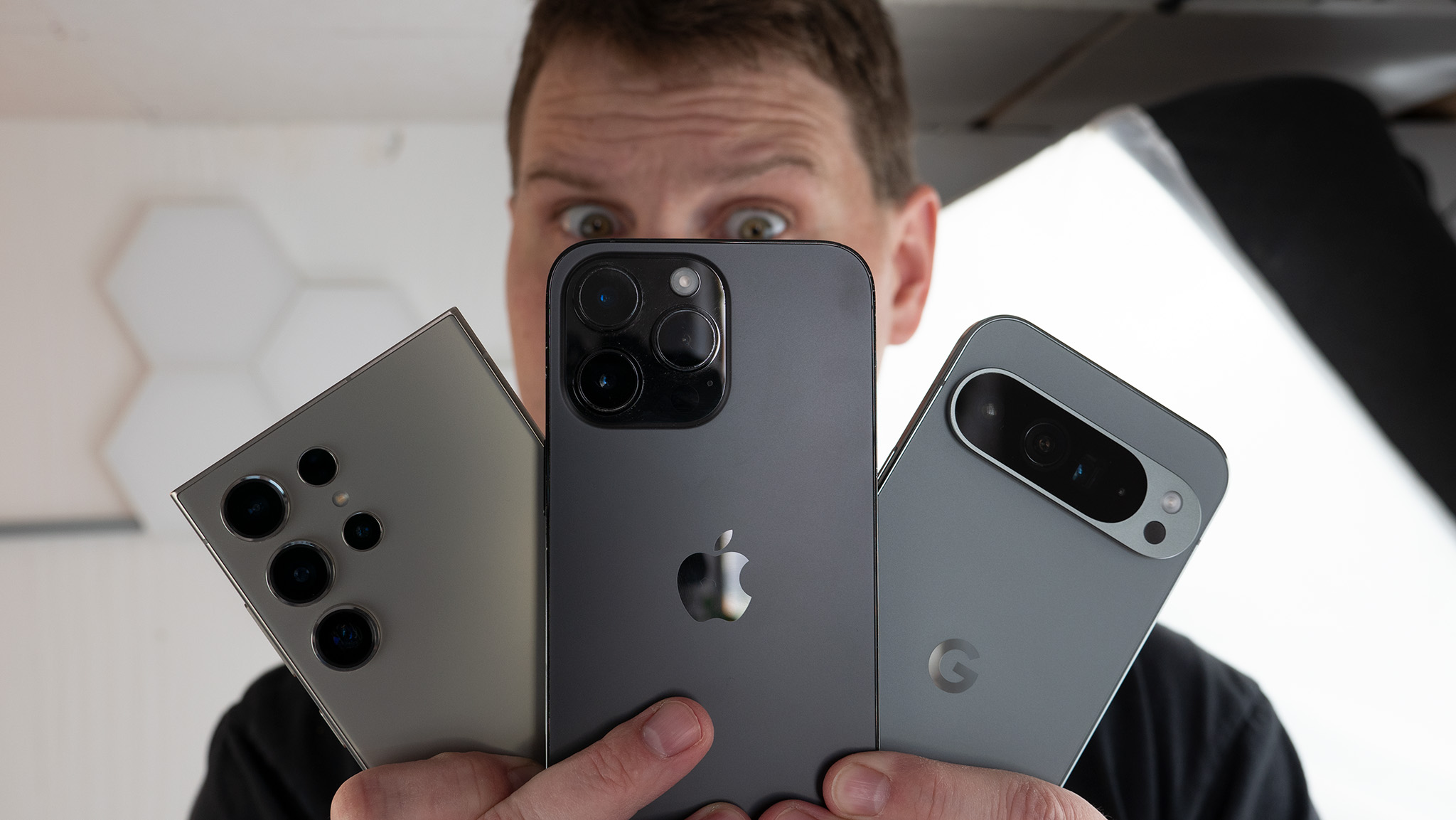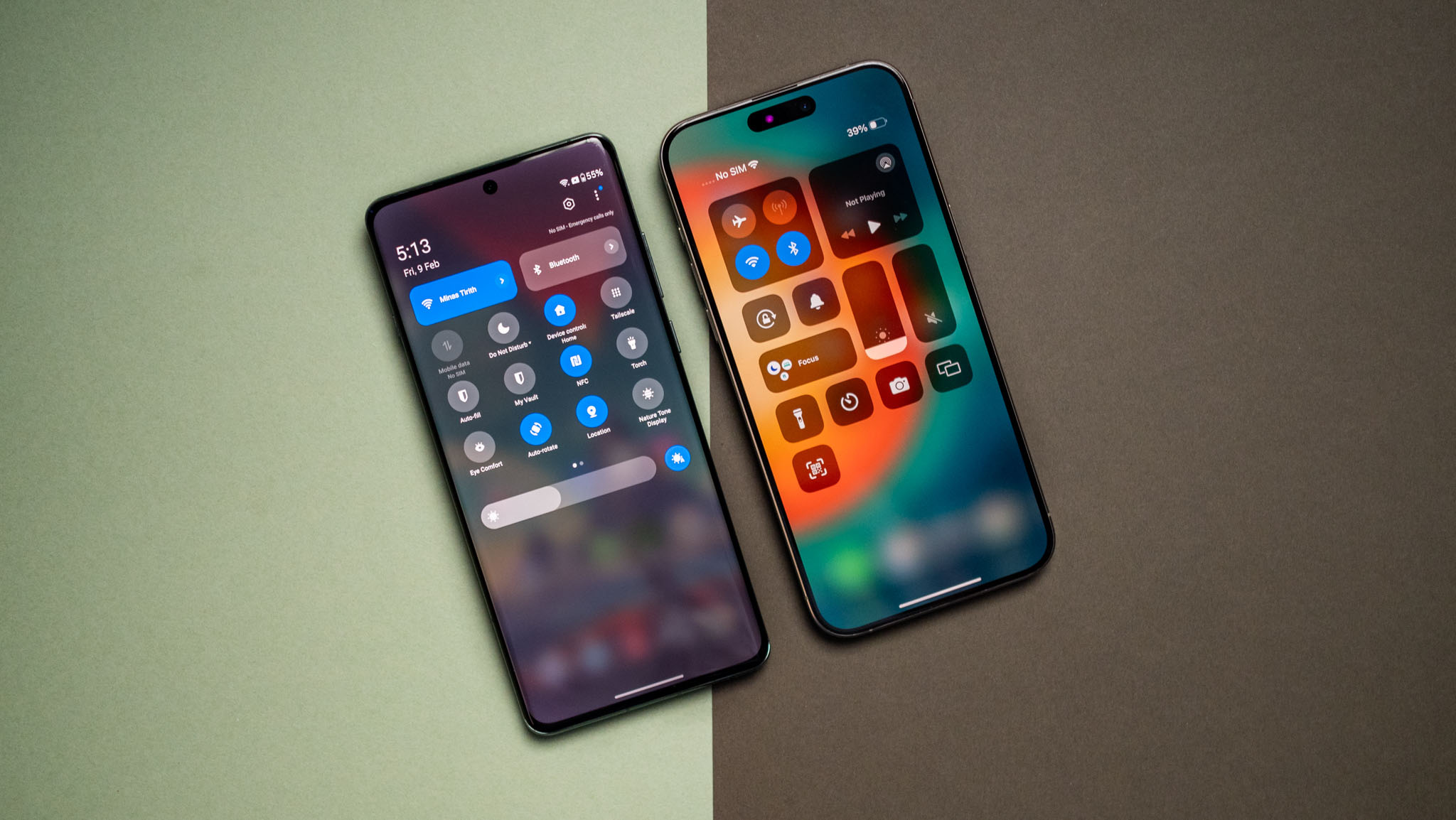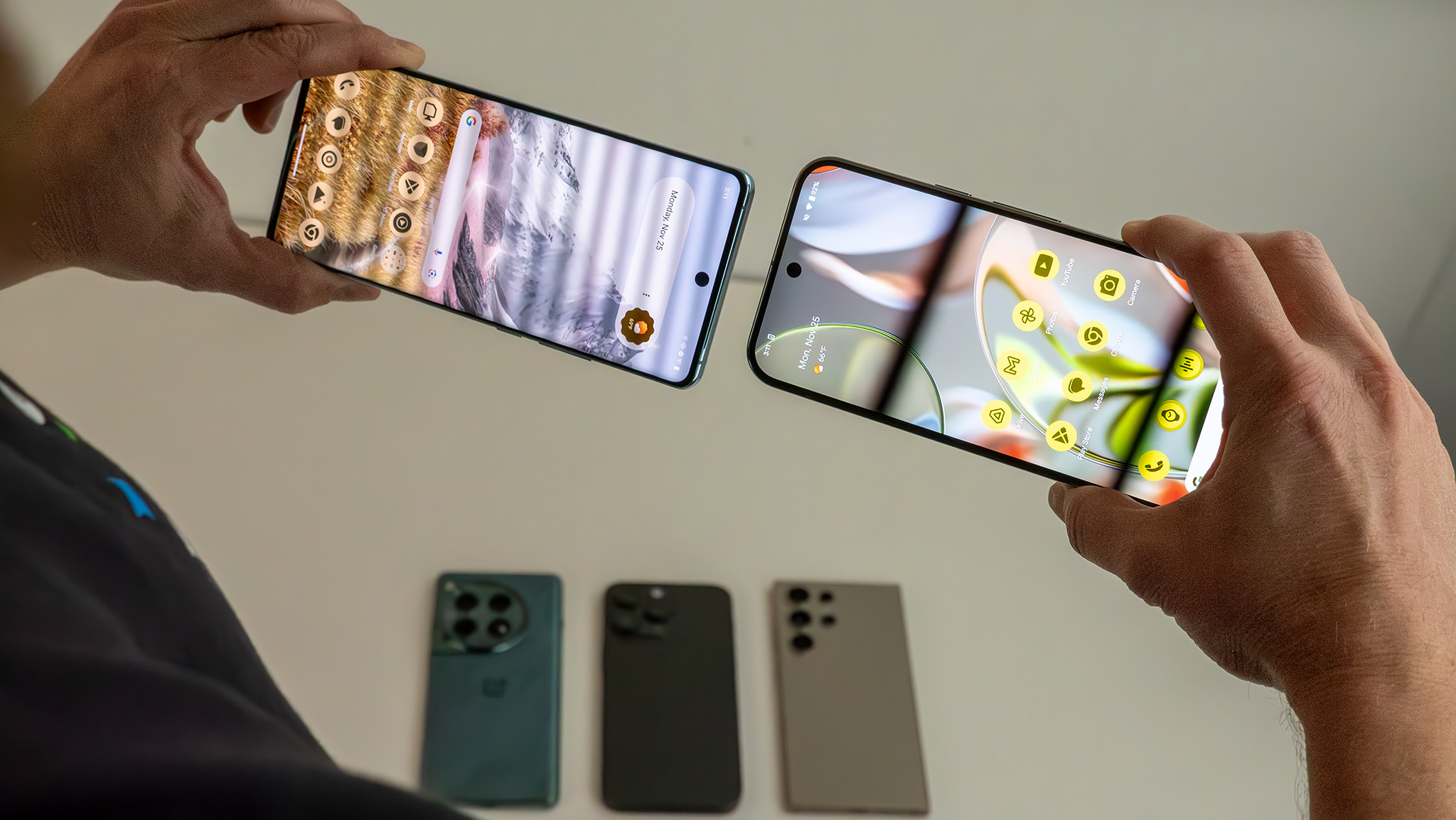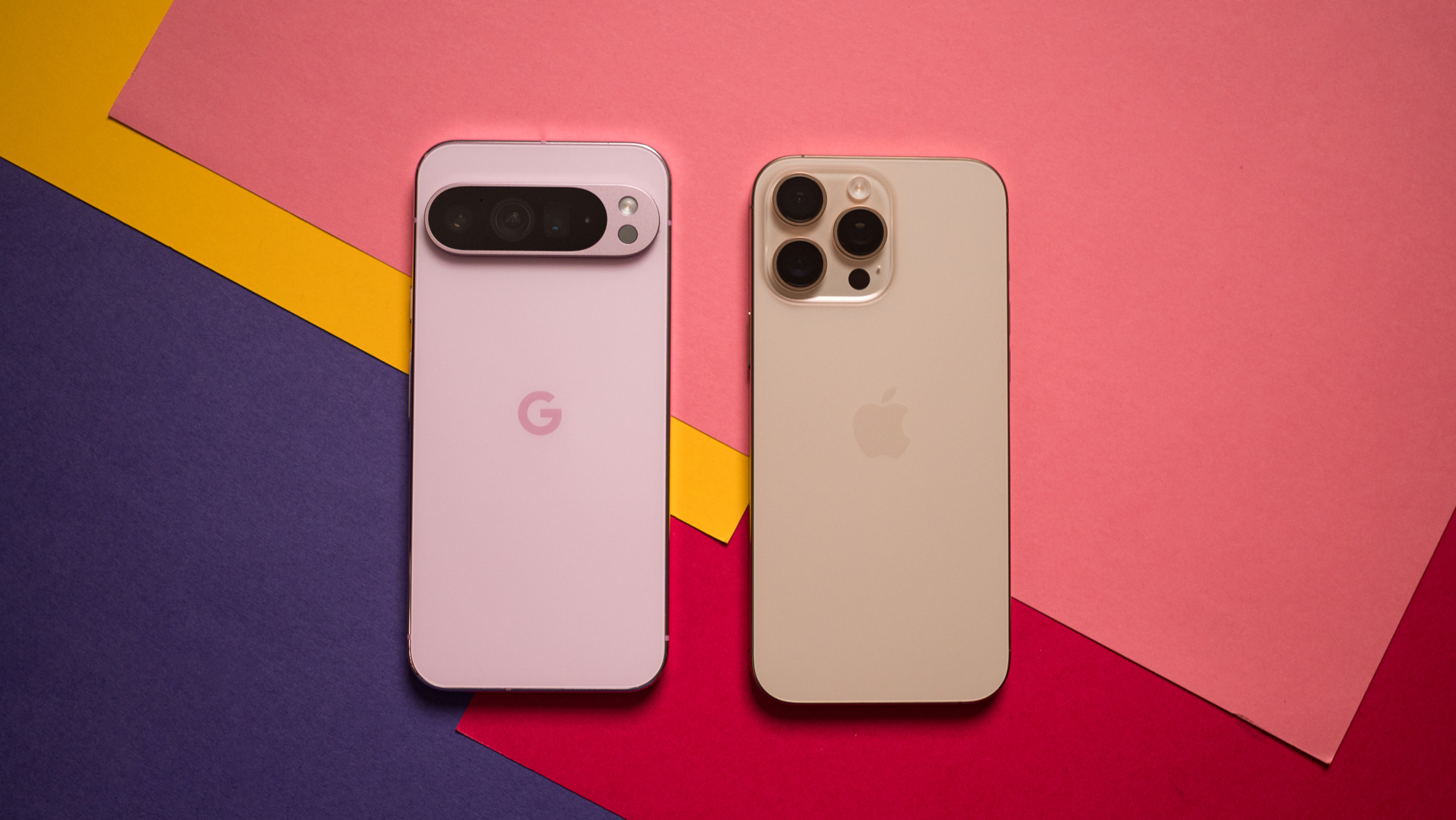New research confirms Samsung, Google, and Apple have been wrong all along
LEDs have long been thought to cause health problems. Now research proves it.

Newly published research is shedding light on the ongoing negative health effects caused by LED lighting — including LED-lit displays like the ones found on your smartphone. This latest research builds upon nearly a decade of similar research by Pacific Northwest National Laboratory, one of the United States Department of Energy national laboratories.

Android Central Labs is a weekly column devoted to deep dives, experiments, and a focused look into the tech you use. It covers phones, tablets, and everything in between.
LED lights that use Pulse Width Modulation, also known as PWM dimming, are causing the same health problems for people that old fluorescent lights used to because they are built on incorrect measurements. Many lights and displays are built with the idea that they shouldn't show visible strobing, but the latest research shows that visible strobing is only one piece of the puzzle.
While the recently published Pacific Northwest National Laboratory's (PNNL) research focuses on LED lighting, the same characteristics can be seen on many smartphone displays.
I first began writing about these issues in May 2023 when I realized that my phone was making me sick. As I researched further, I found that complaints spiked significantly when Apple released the iPhone X, the first iPhone that used Samsung AMOLED displays instead of LCD panels.
Since then, Samsung and Apple have improved the flicker frequency of their displays to 480Hz, but those companies haven't gone far enough to address the real concerns. Research shows that this rate needs to be improved to at least 2400Hz, which is found on phones like the Vivo X100 Pro, for example. Sure enough, when I increased the Pixel 8 Pro's PWM rate by 20x, I found that the eye strain previously caused by the display went away.
Samsung, Google, and Apple all use PWM dimming at or below 480Hz, but research shows that they should be using at least 2400Hz to reduce negative health effects.
Companies like OnePlus and Motorola have gone one step further, though, swapping out potentially harmful PWM dimming with DC dimming, which this research shows is substantially safer.
PNNL's latest research shows that not only is this the right move to make, but that continued use of low-Hz PWM by companies like Samsung, Google, and Apple will further exacerbate health problems caused by poor LED lighting design.
Be an expert in 5 minutes
Get the latest news from Android Central, your trusted companion in the world of Android
I interviewed PNNL's Naomi Miller, who has been a lighting expert and researcher for the last 40 years, to find out more about PNNL's work and the results of the latest research.
How did this happen?

Many lights and displays come with a "flicker-free" sticker or certification on them these days, but the term doesn't mean the same thing to everyone. For many companies like Google, Samsung, and Apple, "flicker-free" simply means that your eyes cannot see the display rapidly turning on and off. Instead, you only see a brighter or dimmer display depending on how long the display stays powered on during each cycle.
The Galaxy S24 family and the latest iPhones all flicker at a rate of 480 times per second, or 480Hz. Meanwhile, Google's Pixel 9 series runs at 240Hz, or half that of Samsung and Apple. All of these companies can claim to be flicker-free because few people can perceive flicker happening at this frequency, although what you see and what's actually happening are two completely different things.
These companies measure flicker by using the stroboscopic effect which quite literally means "can your eye see this light flickering." Most people cannot see flickering past 100Hz, which is why lightbulbs operated at 100-120Hz for decades.
But many flicker standards are based on lights that don't turn completely on or off the way an LED does. Instead, they were often based on incandescent bulbs which use a heated filament to generate light. This filament never completely turns off during a normal 120Hz cycle so its light is incredibly smooth looking. If you measure this on a graph, it looks like a Sine wave that you probably remember from high school math class.
Research shows that many LED lights and OLED displays were built with the wrong flicker measurements in mind.
The light-emitting diodes (LED) in a modern AMOLED display from Samsung attempt to replicate the same effect but have one big problem: an LED turns completely off during this cycle, which makes the difference between the on and off segments substantially harsher than with an incandescent bulb or even most LCD panels. If you measure this on a graph, it looks like a series of rectangles with high peaks and low valleys.
Miller says PNNL's research shows that visibility of the stroboscopic effect using LED lights plummets after 250Hz, with almost no one being able to see the effect beyond 750Hz. However, instead of measuring visible flicker from a static light source, PNNL's research shows that companies need to use the phantom array effect instead.
PNNL defines the phantom array effect as "a series of repeated images that may be perceived when a person moves their eyes in large saccades across a light source that is modulating in output over time." In plain English, it's the strange strobing effect you can sometimes see when washing your hands in a restaurant or when driving behind a car that has bright LED brake lights.
Crunching the numbers

PNNL's latest study evaluated the sensitivity and "annoyance factor" against 85 unique light waveforms generated by a single LED bulb against a black background. The study group included a range of age groups, genders, and folks who are both prone to migraines and those without a history of migraines.
Per the study's abstract, folks prone to migraines were able to see the phantom array effect (light flicker) more often than those without a history of migraines. Ironically, this same group didn't report having seen the effect more often in everyday life than the non-migraine group but did report a higher level of sensitivity to it when it occurred.
As many as 64% of participants cited headaches, eye fatigue, and disorientation after being exposed to common flickering LED lights.
PNNL studied several participant responses, including a "mean annoyance rating," which was defined as a response "on a scale from 0 (not annoying at all) to 8 (extremely annoying, I need to leave the room)."
Of the 85 waveforms shown to people, 50 were a sinewave pattern, 28 were rectangular, six were complex, and one was DC-dimmed. Dialing down into the specifics, the waveform that's closest to the most popular phones available — that's a rectangular shape, 100% modulation, and 400Hz PWM — averaged a 4.8 mean annoyance rating.
The only other waveform on the list of 85 that produced a higher mean annoyance rating was a 120Hz rectangular wave — which produced a 4.9 mean annoyance rating — and would not likely be seen in the real world outside of the very worst types of LED bulbs.

The type of light that comes from the most popular smartphone displays ranked #2 in the worst types of artificial light produced by LEDs.
Dialing down the list, a phone like the Vivo X100 Pro — which uses a 2400Hz PWM display with very low modulation — only shows up at a 1.0 mean annoyance rating. DC-dimmed lights and displays sit at a very comfortable 0.6 mean annoyance rating.
There's a reason most phones from brands like OnePlus, Honor, Xiaomi Vivo, Oppo, and many others have been heavily marketing that they're using DC dimming or very high PWM rates. They're ahead of the curve, and it's time Samsung, Google, and Apple catch up.
The study shows that up to 64% of migraine-prone participants experienced headaches, eye fatigue, or disorientation during or after the test. Meanwhile, the number of non-migraine sufferers that experienced these symptoms was much smaller — about 17% — but the fact that this isn't attributed only to folks with migraine sensitivity is a landmark finding.
Will Apple, Google, and Samsung will do the responsible thing and follow the science, or will they continue the current path of deprioritizing long-term human health over less important metrics?
As more and more LEDs become pervasive in our world, it's becoming increasingly important for manufacturers to pay attention to studies like these. It's impossible to get away from LED lighting these days, and having devices all around that can cause ill health effects only further exacerbates the problem.
As previous research backs up, negative health effects significantly diminish as PWM frequency increases. Will Apple, Google, and Samsung will do the responsible thing and follow the science, or will they continue the current path of deprioritizing long-term human health over less important metrics?
Until then, the best thing to do to guard your health is to buy phones from other brands. I've long recommended the OnePlus 12 as the best Android phone for many reasons, but its display is one of the most important for your long-term health. If you're in the U.S., brands like Motorola, Nothing, and CMF are all excellent choices for eye health, too.

You must confirm your public display name before commenting
Please logout and then login again, you will then be prompted to enter your display name.
